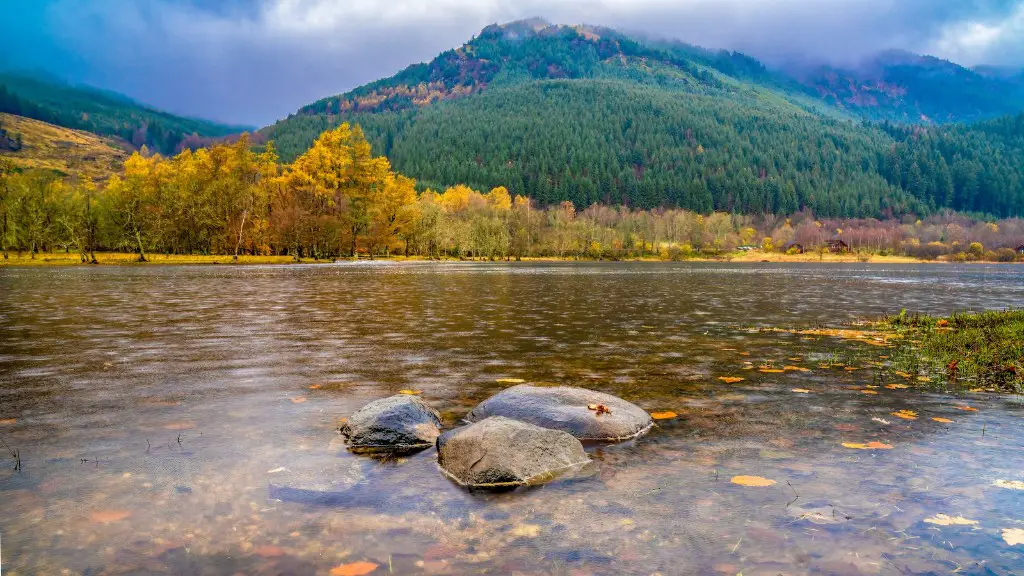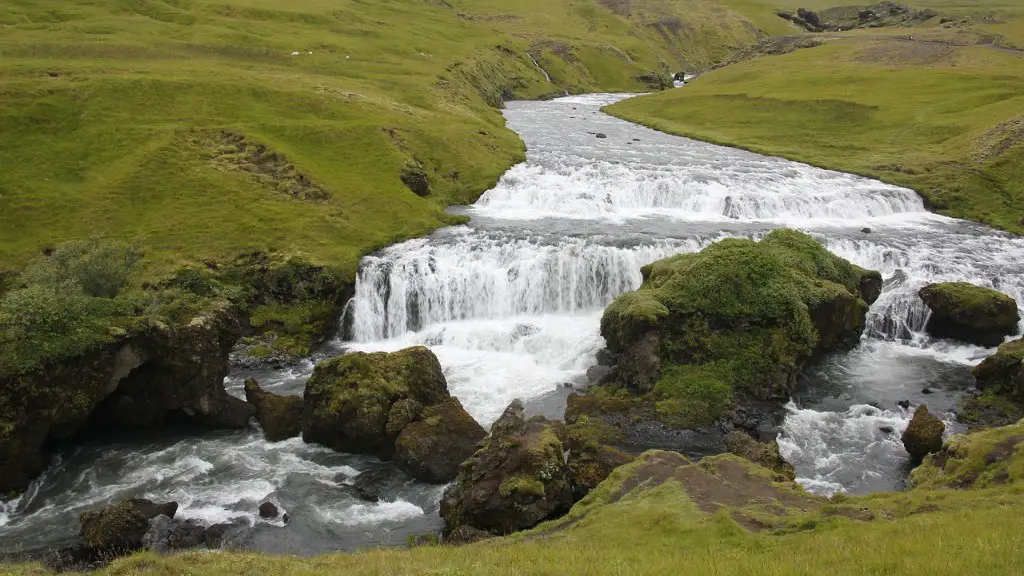The Mississippi River is one of the most iconic water sources in the United States. Spanning from northern Minnesota to the Gulf of Mexico, the mighty Mississippi is steeped in history as well as culture. The river forms much of the southern and eastern borders of the states that it passes through. From its iconic wetlands, to its vast farming expanse, there is something for everyone who visits its expansive banks.
Physically, the Mississippi really does span the nation with its source stemming from Lake Itasca in northern Minnesota. The river then winds its way south 2,530 miles meandering through ten states- Wisconsin, Minnesota, Iowa, Illinois, Missouri, Kentucky, Arkansas, Tennessee, Mississippi, and Louisiana. With a drainage basin encompassing 41% of the contiguous United States, the Mississippi River is the fourth largest river system in the world. Throughout this expanse, it ranges from a width of only 200 feet to over three miles wide. The Mississippi gets much of its water flow and direction from the many tributaries that join it along its journey.
Environmentalists that study the river are enthralled by the variety of aquatic life and different habitats it provides. Encompassing ecosystems of every type, from snow-fed rapids to rare riparian woodlands, the Mississippi River is a safe haven for thousands of species of animals who call it home. Conservationists are actively trying to protect and improve the various habitats the Mississippi hosts and to help restore the historically altered natural systems.
Wetlands are especially important to the overall health of the Mississippi River ecosystem. Wetlands act as natural filtration systems for the river, capturing contaminants and providing respite for birds, amphibians, and mammals along its length. Bordered by active floodplains, the wetlands are an important contributor in preserving the health of fish and aquatic animals while improving the quality of the river’s water. Habitat restoration projects and enhanced floodplain management practices have been ongoing in order to protect the many endangered species throughout the Mississippi region.
Agriculture is also a major presence along the Mississippi River. The fertile soil, access to the water, and abundant sun contribute to many agricultural practices. With most of the river passing through rural areas, it has been a source of commerce and sustenance. It’s not uncommon to see barges of grain, coal and wood being transported down the river allowing easy commerce between farmers and merchants. In addition to commerce, fishing, hunting, trapping, and timber harvesting are all still commonly practiced along the river.
In terms of both culture and geography, the Mississippi River has an immense presence in the history and identity of the United States. It has played a pivotal role in shipping goods, providing sustenance and refuge, and inspiring creativity from those who either live along its expanse or who visit its iconic banks. For anyone who wishes to explore the Mississippi, it is easy to find serene open spaces and enjoy the inspiring sights and sounds of this iconic river.
History of the Mississippi River
The Mississippi River’s history dates back thousands of years. It is estimated that Native American tribes living in the area several thousand years ago used the river as a major trade route. Bisecting the country, the river made it easier for these people to trade goods with other tribes. More recently, the river has been a major presence in the historiography of the southern United States. It has been a safe haven for freed slaves during the civil war, and a major economic driver for both commerce and tourism. In the 1960s, civil rights activists and Mississippi Freedom Riders used the river as inspiration for their efforts to desegregate. Over the centuries, the Mississippi River has become a major symbol of the American spirit and identity.
Today, the Mississippi River remains a major economic and cultural presence in the nation’s history. While commercial shipping on the river occupies a major portion of the area’s economic activities, ecotourism is also a widely growing pursuit. Tourists can experience a wide array of activities ranging from bird-watching to fishing, and canoeing to eco-tours. The abundance of activities, as well as the stunning natural beauty makes the Mississippi River an ideal destination for those wishing to explore the south.
Protection of the Environment Surrounding the Mississippi River
The Mississippi River and the area surrounding it is one of the nation’s most treasured natural resources. Environmentalists, scientists, and local citizens are actively working to protect this precious river and the lands it touches. The efforts of conservation organizations and community groups have already had an immense impact on restoring the health of the Mississippi. As the protection of this vast ecosystem continues, the need for research and education on biodiversity becomes paramount. By understanding and protecting the delicate web of wildlife, plants, and invertebrates that share the river, their chances of long-term success increases.
Organizations around the region are also working to restore degraded areas along the river. For example, the Delta Restoration Alliance is a group of organizations actively working to restore 125,000 acres of land in order to better support the ecosystem. Through their efforts, the team works to re-vegetate the land, restore historic cypress benches, and create sustainable habitats for wildlife. Furthermore, the alliance partners with local stakeholders to create more jobs, develop educational initiatives, and create economic opportunity.
In addition, there are numerous efforts to create more energy efficient practices for the area. Governments, conservation organizations, and businesses are constantly exploring ways to create more efficient energy practices for the river. From creating hybrid vessels, to using renewable energy sources such as solar, there is now much knowledge and insight that goes into reducing the impact of energy usage on the river.
Finally, residential cleanup programs are also a major part of the river’s protection. Programs such as Adopt-A-River are gaining traction around the region. It is an initiative in which local volunteers take responsibility for the cleanliness of a designated section of the river and monitor it throughout the year. They clean up litter and discarded items, ensure proper stormwater management, and promote volunteerism among local citizens.
Navigating down the Mississippi is a unique experience that has been popularized throughout the years. From paddlers wishing to experience the wide expanse of the Mississippi to larger vessels such as barges and boats, there is something for everyone. Professional captains and experts offer advice for navigating on the Mississippi and its tributaries.
One of the great challenges of navigating down the Mississippi is dealing with the changing water levels. The river is subject to dramatic floods due to snow and heavy rains throughout the region. Professional navigators must always be aware of the current water levels and be prepared to navigate around new channels and islands as the water levels change.
Navigating the Mississippi is an art form and starts with familiarity of the route. Locks and dams are common along the entire length of the river. Navigating through these locks requires an understanding of the local waterways and where to slow down, pause, or stop the vessel. Captains make sure to always have a mental map or GPS chart of the river in order to help them.
In addition to navigation by vessel, the Mississippi is also a popular spot for paddling. Whether by canoe, kayak, or paddleboat, there is plenty of opportunity to explore the river. Professional guides are always available and can provide navigation skills as well as insider knowledge on the local flora and fauna.
Popular Destinations on the Mississippi River
The Mississippi River is home to some of the most popular locations in the southern regions of the United States. Whether a person is interested in culture, food, history, or outdoor recreation, there is something for everyone. Popular tourist spots line the banks of the Mississippi. From Memphis, TN to New Orleans, LA, visitors can take in the sights and sounds of some of the region’s most iconic locations.
In Memphis, Tennessee, visitors can take a stroll down Beale Street and experience the unique blues music scene the city is known for. The National Civil Rights Museum is also a popular spot. Located just steps away from the site of the assassination of Dr. Martin Luther King Jr., the museum recounts the long battle for civil rights throughout the United States.
The French Quarter in New Orleans is another iconic city along the River. Famous for its cuisine, jazz music, and distinct architecture, the French Quarter draws visitors from all walks of life. As one walks through the city, it’s easy to become immersed in the history and character of this city and the river around it.
The Mississippi River is also a great destination for outdoors lovers. With its sweeping landscapes, clear waters, and abundance of wildlife, the Mississippi is a great spot for camping, hiking, and canoeing. Everywhere along the river, one can find outdoor activities and stunning places to explore. Whether camping in the rugged terrains of Arkansas, fishing in the pristine waters of Minnesota, or birdwatching in the wetlands, the Mississippi River offers something for everyone.
Eco Tourism on the Mississippi River
Eco-tourism on the Mississippi River is an emerging trend that is quickly becoming popular with visitors from around the world. By exploring the wonders of this ecosystem, visitors can truly appreciate the scale and impact of the Mississippi River. Eco-tours to the river offer the opportunity to learn more about the various habitats, plants, and animals that call the river home. The tours can also provide personal insights and fascinating perspectives about the history and culture of the region.
A typical eco-tour typically includes stops at various points along the river and its tributaries. Tours may also include interactive elements such as hands-on activities at unique and serene locations along the Mississippi. Visitors will also have the opportunity to explore the wetlands and marshes, while also learning about conservation in the area and best practices for sustainability. Eco-tours are a great way to connect with the river and gain a deeper appreciation for this vital national resource.
Eco-tour providers must abide by certain ethical policies and practices. They focus on educating visitors while respecting the environment and respecting the beliefs of local cultures. They also work to raise public awareness and understanding of the river. By using ethical practices, eco-tour providers can help preserve this invaluable resource and contribute to the well-being of the local communities and flora and fauna along the river.
Mississippi River Preservation
Preserving the Mississippi is of the utmost importance for local populations and for the entire nation. Members of governments, corporations, and organizations are all working together to help make sure the river has a healthy future. By enacting laws and regulations, conducting research, and engaging citizens, the preservation of the Mississippi remains an ongoing effort.
The National Mississippi River Preservation Act, a landmark piece of legislation, has been in place since 1987. It established regulatory programs based on the best available scientific information as well as public initiatives in order to protect water quality through the reduction of pollutants. The Clean Water Act of 1972 was also a major piece of legislation that sought to protect the river from toxic waste and harmful runoff. It also regulates activities from factories and other industries that may cause harm to water quality.
In addition to legislation, citizens and grassroots organizations are also working to preserve the river. From joining clean-ups to advocating for policies, communities have made their presence known when it comes to preserving the river. Recent efforts involve restoring wetlands, improved riparian management, and improved sewage treatment systems. There are also many organizations that have emerged in recent years such as the Mississippi River Collaborative, the Mississippi River Network, and the Mississippi River Relief.
The future of the Mississippi River is one of ongoing effort and vigilance. By remaining active and engaged, it is possible to ensure that the Mississippi has a bright future and a healthy ecosystem.





